Become FINNISH
IT’S TIME TO
AUTHENTIC FINNISH LIVING

From its early settlements and the establishment of the Kingdom of Finland, to its period under Swedish and Russian rule, Finland has played a significant role in Northern European history. Its unique cultural identity blends Nordic, Baltic, and Russian influences while maintaining strong indigenous Finnish and Sami traditions. With breathtaking natural landscapes, from vast forests and thousands of lakes to the magical Northern Lights, Finland offers a timeless journey through its rich heritage and deep connection to nature.
After gaining independence in 1917, Finland navigated the challenges of the 20th century with resilience, emerging as a global leader in innovation, education, and sustainable living. The nation joined the European Union in 1995 and has since strengthened its reputation for technological advancements, social welfare, and environmental consciousness. Today, Finland is known for its high quality of life, world-class design, and a strong sense of community, while also being a pioneer in digitalization and green technology.
We have created a selection of cultural insights that help you become truly familiar with Finnish by memorizing words and expressions that you won’t find in any textbook or course.


EXPAND YOUR KNOWLEDGE
If you are interested in learning more about Finnish culture and history as well as the language, we recommend that you download our complete Finnish language course!
You will not only receive all the contents available on our website in convenient pdf format but also additional contents, including bonus vocabulary, more grammar structures and exclusive cultural insights with additional Finnish vocabulary that you won't find anywhere else.
The additional articles include specific words or expressions related to the culture of the Finnish people. Not only will you be able to speak the Finnish language with confidence but you will amaze your listeners thanks to your knowledge of their country and history.


LAND OF A THOUSAND LAKES
Finland is known as the tuhansien järvien maa (land of a thousand lakes), with over 188,000 järvet (lakes) spread across the country. These pristine bodies of water are an essential part of suomalainen luonto (Finnish nature), offering breathtaking scenery and countless opportunities for ulkoilu (outdoor activities). Many Finns have mökkielämä (cottage life) near a lake, where they enjoy uinti (swimming), melonta (canoeing), and kalastus (fishing). The largest lake, Saimaa, is home to the rare saimaannorppa (Saimaa ringed seal), one of the most endangered seal species in the world. In winter, frozen lakes become ideal for pilkkiminen (ice fishing) and retkiluistelu (tour skating). Lakes have also played a role in Finnish traditions, including the challenge of obtaining a porokortti (reindeer driver’s license), where young herders in Lapland had to navigate across frozen vesistöt (waterways) as part of their training. The järvimaisema (lake landscape) changes beautifully with the seasons, from the bright blue waters of summer to the icy white surfaces of winter.


HAPPIEST COUNTRY
Finland has consistently been ranked as the world's most onnellinen maa (happy country), according to the annual World Happiness Report. This ranking is based on various factors such as elintaso (standard of living), sosiaalinen tuki (social support), terveydenhuolto (healthcare), and vapaa-aika (leisure time). One key reason for this happiness is the strong sense of yhteisöllisyys (community) and luottamus (trust) among people, which fosters a secure and supportive society. Finland’s koulutusjärjestelmä (education system) is highly regarded, offering equal opportunities for all and ensuring high levels of lukutaito (literacy). Additionally, luonto (nature) plays a significant role in well-being, as Finns have access to vast forests, järvet (lakes), and clean air, contributing to a balanced and peaceful lifestyle. The concept of sisu (inner strength and perseverance) is deeply ingrained in Finnish culture, helping people overcome challenges with resilience. Another aspect of happiness in Finland is the hyvinvointivaltio (welfare state), which guarantees support in times of need. Furthermore, Finns enjoy a great work-life balance, as työaika (working hours) are reasonable, leaving time for harrastukset (hobbies) and relaxation.


ROVANIEMI
Rovaniemi, the official hometown of Joulupukki (Santa Claus), is a magical destination where visitors can meet him all year round. Located in Lappi (Lapland), this enchanting place is home to Joulupukin pajakylä (Santa Claus Village), a popular attraction where families can cross the Napapiiri (Arctic Circle), send postcards from Joulupukin posti (Santa’s Post Office), and experience the festive atmosphere. The village is surrounded by stunning talvimaisema (winter scenery), with snowy forests and twinkling lights creating a fairytale-like setting. Children and adults alike can share their wishes with Santa, while tontut (Santa’s elves) help prepare for Christmas. Visitors can also enjoy porosafari (reindeer safari) and huskyajelu (husky ride), immersing themselves in traditional Arctic experiences. The region’s revontulet (Northern Lights) add to the magical experience, making a winter visit even more unforgettable. During the holiday season, Rovaniemi transforms into a true joulumaa (Christmas land), where the spirit of Christmas is felt everywhere. Besides Santa’s village, tourists can explore arktinen museo (Arctic museum), enjoy traditional Finnish jouluherkut (Christmas delicacies), and experience the warmth of joulusauna (Christmas sauna), an essential part of Finnish holiday traditions.


KALEVALA
The Kalevala is Finland’s national epic and one of the most significant works of suomen kirjallisuus (Finnish literature). Compiled by Elias Lönnrot, it is a collection of kansanrunot (folk poems) passed down orally for centuries. The epic tells the stories of legendary heroes such as Väinämöinen, a wise and powerful tietäjä (shaman), Ilmarinen, a skilled seppä (blacksmith), and Lemminkäinen, a charming and adventurous warrior. These characters embark on epic quests, including the forging of the mystical Sampo, a magical object that brings vauraus (prosperity). The Kalevala-mittari (Kalevala meter), a unique poetic structure, gives the text its rhythmic and lyrical quality. The themes of the epic, such as luonto (nature), kohtalo (destiny), and taikuus (magic), reflect the deep-rooted beliefs of the Finnish people. The Kalevala has influenced Finnish taide (art), musiikki (music), and even kansallisidentiteetti (national identity), playing a crucial role in the rise of Finnish nationalism in the 19th century. Today, its legacy continues to inspire literature, films, and even fantasy works worldwide. The epic remains an essential part of Finnish kulttuuriperintö (cultural heritage), celebrated every year on Kalevalan päivä (Kalevala Day), February 28th.


SAUNA
The sauna is an essential part of suomalainen kulttuuri (Finnish culture) and a deeply rooted tradition that dates back thousands of years. Almost every Finnish home has a saunahuone (sauna room), and many people consider it a place for both rentoutuminen (relaxation) and puhtaus (cleanliness). The experience begins by heating the kiuas (sauna stove), which warms the kivet (stones), allowing bathers to throw löyly (steam) by pouring water over them. The temperature inside a sauna can reach over 80°C, promoting hikoilu (sweating) and cleansing the body. Traditional puusauna (wood-heated sauna) offers an authentic experience, while modern sähkösauna (electric sauna) is more common in urban homes. Some Finns enjoy savusauna (smoke sauna), an older style known for its soft heat and distinctive atmosphere. After sweating in the sauna, it is common to cool off by taking a dip in järvivesi (lake water), rolling in lumi (snow), or enjoying a refreshing vihta (birch whisk) massage. The sauna is also a social space where people engage in syvälliset keskustelut (deep conversations). Whether in summer cottages, public saunas, or even special telttasauna (tent saunas), the sauna remains a vital part of Finnish elämäntapa (way of life).
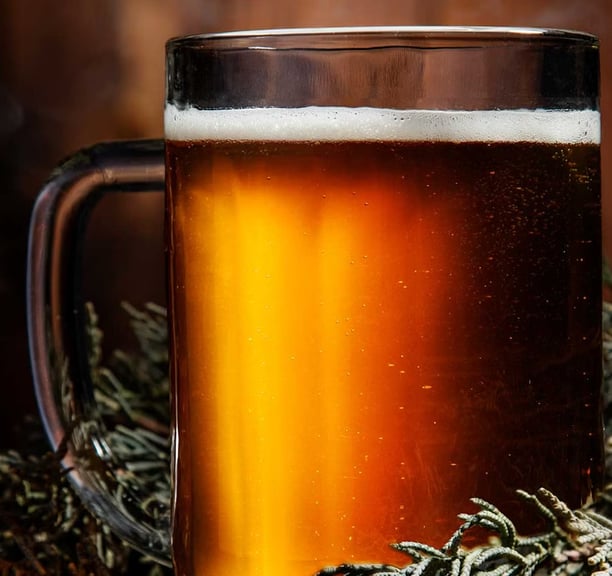

SAHTI
Sahti is a traditional suomalainen olut (Finnish beer) with deep historical roots, especially in rural areas of Finland. It is an unfiltered, naturally fermented viljapohjainen juoma (grain-based beverage) typically brewed using ruis (rye), ohra (barley), vehnä (wheat), and sometimes kaura (oats). Unlike modern beers, sahti is flavored with kataja (juniper), which gives it a distinctive aroma and also helps with preservation. The brewing process follows old perinteet (traditions), where the vierre (wort) is strained through katajanoksat (juniper branches) before fermentation. Traditionally, sahti is fermented using leivinhiiva (baking yeast), resulting in a mildly carbonated, smooth, and slightly sweet beer with hints of banaani (banana) and mausteet (spices). It is usually brewed in small batches, especially for juhlat (festivals) and kyläjuhlat (village celebrations). The alcohol content of sahti can vary but is often stronger than typical commercial beers. This ancient brewing tradition has been recognized as an important part of suomalainen ruokakulttuuri (Finnish food culture), and today, small breweries continue to produce sahti using traditional methods. Whether enjoyed in a rural saunailta (sauna evening) or at a local panimo (brewery), sahti remains a unique and cherished part of Finnish heritage.


FREEDOM RIGHTS
In Finland, jokamiehenoikeudet (everyman’s rights) grant everyone the freedom to enjoy luonto (nature) regardless of land ownership. This unique concept allows people to liikkua vapaasti (move freely) in forests, fields, and erämaa (wilderness), as long as they respect nature and private property. One of the most cherished aspects of jokamiehenoikeudet is the right to marjastaa (pick berries) and sienestää (forage mushrooms) for personal use, making Finland’s vast forests a natural pantry for all. Additionally, people can set up a leiripaikka (camping spot) almost anywhere for a short stay, as long as they do not disturb the ympäristö (environment) or landowners. Fishing with a simple onki (fishing rod) is also allowed without a permit, while more advanced kalastus (fishing) methods may require licenses. However, these rights come with vastuu (responsibility), meaning visitors must not leave litter, damage vegetation, or harm eläimet (animals). Lighting a nuotio (campfire) is restricted in dry conditions to prevent wildfires. Jokamiehenoikeudet reflect Finland’s deep respect for luonnonsuojelu (nature conservation) and the belief that nature belongs to everyone.


MIDNIGHT SUN
The keskiyön aurinko (Midnight Sun) is a natural phenomenon that occurs in Pohjois-Suomi (Northern Finland) during the summer months, when the sun does not set for weeks. This unique event happens above the Napapiiri (Arctic Circle), where daylight lasts 24 hours a day, creating an extraordinary valoisuus (brightness) even at night. The Midnight Sun is most visible in Lappi (Lapland), where the endless daylight allows for extended ulkoilu (outdoor activities) such as vaellus (hiking), melonta (canoeing), and kalastus (fishing). Locals and visitors alike enjoy late-night walks, yöuinti (night swimming), and even playing yöttömän yön golf (Midnight Sun golf). The constant sunlight has a significant effect on luonto (nature), accelerating plant growth and creating a vibrant kesämaisema (summer landscape). The Midnight Sun also influences suomalainen elämäntapa (Finnish way of life), bringing a boost in energy and a unique festive atmosphere, with many kesäjuhlat (summer festivals) taking place. Despite the beauty of the phenomenon, some people experience univaikeudet (sleep difficulties) due to the continuous daylight, which is why pimennysverhot (blackout curtains) are common in Finnish homes.
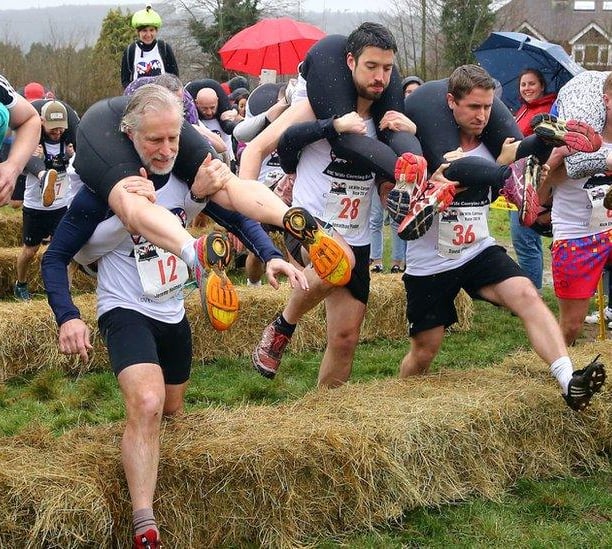

WIFE-CARRYING
Eukonkanto (wife-carrying) is a quirky and world-famous urheilulaji (sport) that originated in Finland. This unusual competition, held annually in Sonkajärvi, challenges participants to carry their puoliso (spouse) or kumppani (partner) through a challenging esterata (obstacle course) that includes vesieste (water obstacles) and rough terrain. The race is inspired by old Finnish kansantarut (folk tales) and historical stories of men proving their strength and endurance. Various carrying techniques are allowed, but the most popular is the virolainen ote (Estonian carry), where the woman hangs upside down on the man’s back. The goal is to complete the course as quickly as possible while following säännöt (rules), such as ensuring the kantaja (carrier) does not drop their partner. The winner receives a prize based on the weight of the eukko (wife), traditionally in olut (beer). Beyond the competition, eukonkanto has become a fun and lighthearted event that attracts osallistujat (participants) and katsojat (spectators) from around the world. The sport highlights the Finnish sense of huumori (humor) and love for hassut kilpailut (silly competitions), making it one of the most entertaining traditions in Finland.


FINNISH BASEBALL
Pesäpallo (Finnish baseball) is Finland’s national urheilulaji (sport), combining elements of traditional baseball with unique Finnish adaptations. Invented by Lauri Pihkala in the 1920s, it is a fast-paced game that requires taktinen ajattelu (tactical thinking) and nopeus (speed). The main objective is for the lyöjä (batter) to hit the pallo (ball) thrown by the syöttäjä (pitcher) and then run through the pesät (bases) in a zigzag pattern instead of a diamond shape, as in American baseball. The ulkopelaajat (fielders) must catch and return the ball quickly to prevent the etenijä (runner) from reaching the next base. The game is divided into vuoroparit (innings), where teams take turns batting and fielding. One of the most exciting aspects of pesäpallo is the unique syöttö (pitch), where the pitcher tosses the ball vertically into the air before the batter swings. Professional Superpesis matches draw large crowds, while amateur and juniorisarjat (junior leagues) keep the sport popular across the country.


ARVO AALTO
Alvar Aalto is one of the most renowned figures in suomalainen arkkitehtuuri (Finnish architecture), known for his innovative and human-centered designs. His work blended funktionalismi (functionalism) with natural elements, creating buildings that harmonized with their ympäristö (environment). Aalto designed many famous structures, including Finlandia-talo (Finlandia Hall) in Helsinki, the Paimion parantola (Paimio Sanatorium), and the Säynätsalon kunnantalo (Säynätsalo Town Hall). His use of puu (wood), luonnonvalo (natural light), and organic shapes became a defining characteristic of his style. In addition to architecture, Aalto was a pioneer in suomalainen muotoilu (Finnish design), creating iconic furniture pieces such as the Aalto-jakkara (Aalto stool) and the maljakko (vase) that remains a symbol of Finnish design today. His influence extended beyond Finland, as his work inspired modern architects worldwide. Aalto’s designs reflect the Finnish connection to luonto (nature) and the principle of käytännöllisyys (practicality) in everyday life. Many of his buildings and designs are still admired for their ajattomuus (timelessness) and functionality. His legacy lives on through the Alvar Aalto -säätiö (Alvar Aalto Foundation), which preserves and promotes his contributions to architecture and design.
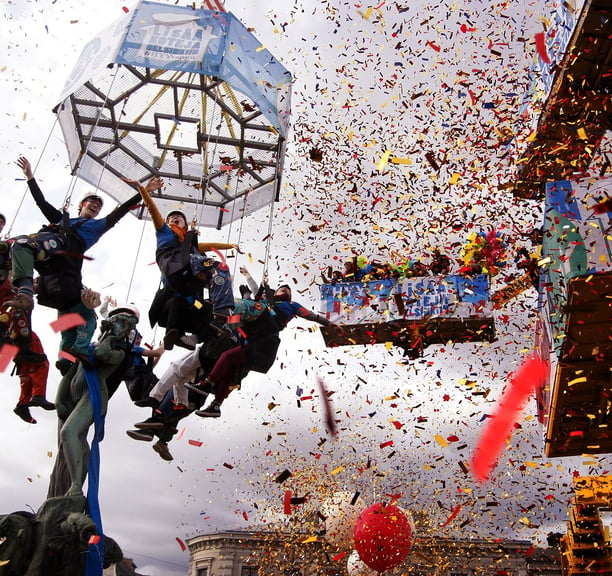

VAPPU
Vappu (May Day) is one of the most important juhlapäivät (celebration days) in Finland, marking both työväenjuhla (Labor Day) and a lively kevätjuhla (spring festival). Celebrated on toukokuun ensimmäinen päivä (May 1st), it is especially popular among opiskelijat (students), who wear their ylioppilaslakki (student cap) as a symbol of academic achievement. The celebrations begin on vappuaatto (May Day Eve), when people gather in city squares, parks, and streets to enjoy karnevaalitunnelma (carnival atmosphere) with music, dancing, and laughter. Traditional vappuherkut (May Day treats) include munkit (doughnuts) and tippaleivät (funnel cakes), often enjoyed with simä (homemade mead), a sweet, lightly fermented drink. In Helsinki, a highlight is the Havis Amandan lakitus (capping of Havis Amanda), where students place a student cap on the famous patsas (statue) in the city center. On vappupäivä (May Day), families and friends gather for piknik (picnics) in parks like Kaivopuisto, bringing along bubbly kuohuviini (sparkling wine) and festive snacks.
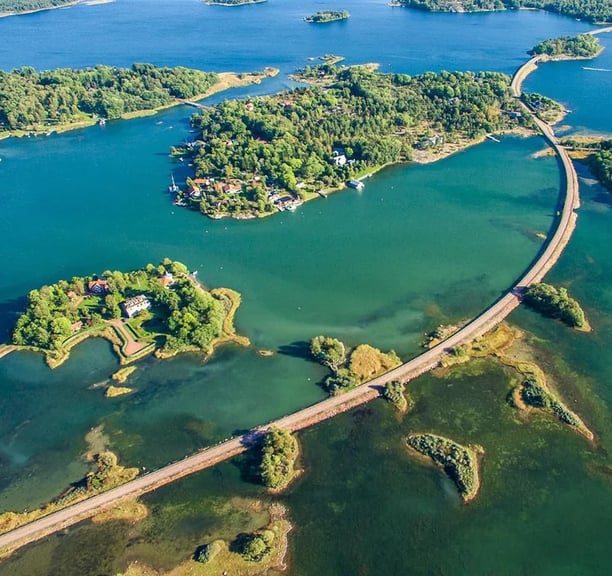

ALAND ISLANDS
The Ahvenanmaa (Åland Islands) is an autonomous and demilitarized saariarkkipelagi (archipelago) between Finland and Sweden, known for its unique kulttuuri (culture) and stunning luonto (nature). Although part of Suomi (Finland), the official language of Åland is ruotsi (Swedish), and the islands have their own itsehallinto (self-government), with their own lainsäädäntö (legislation) and verotus (taxation system). The capital, Maarianhamina, is a charming satamakaupunki (port city) with a rich maritime history, home to the Pommern, a historic purjelaiva (sailing ship) that symbolizes the region’s seafaring past. Åland is famous for its merenherkut (seafood delicacies), including fresh silakka (Baltic herring) and local mustaleipä (black bread). The islands attract visitors with pyöräilyreitit (cycling routes), scenic saaristotiet (archipelago roads), and opportunities for melonta (kayaking). The region’s status as a tullivapaa alue (duty-free zone) makes it popular for shopping, especially on risteilyt (cruises) between Finland and Sweden. Åland celebrates its own itsehallintopäivä (Autonomy Day) on June 9th, marking its special political status.


REINDEERS
Poro (reindeer) is one of the most iconic animals of Lappi (Lapland) and an essential part of saamelaiskulttuuri (Sámi culture). These hardy animals are well adapted to the arktinen ilmasto (Arctic climate), with thick fur and specialized hooves that help them walk on lumi (snow) and dig for jäkälä (lichen), their main food source in winter. In Finland, reindeer herding is an important elinkeino (livelihood) for the poronhoitajat (reindeer herders), particularly among the indigenous saamelaiset (Sámi people), who have practiced poronhoito (reindeer husbandry) for centuries. Every reindeer in Finland is puolivilli (semi-wild), meaning they roam freely in tunturit (fells) and forests but are gathered by their owners during specific times of the year. Reindeer are also an important part of Lappilainen matkailu (Lapland tourism), with visitors enjoying porosafarit (reindeer safaris), learning about perinteiset porovaljakot (traditional reindeer sleds), and tasting poronliha (reindeer meat), a traditional ingredient in suomalainen keittiö (Finnish cuisine). The sight of reindeer wandering along maantiet (roads) is common in the north, adding to the magical atmosphere of Finland’s Arctic region.


FINNISH EDUCATION
The suomalainen koulutusjärjestelmä (Finnish education system) is considered one of the best in the world, known for its laatu (quality), tasa-arvo (equality), and innovaatiot (innovations). One of the key principles is maksuton koulutus (free education), ensuring that all students, regardless of background, have access to peruskoulu (basic education), lukio (upper secondary school), and even yliopisto (university) without tuition fees. Teachers in Finland are highly trained, with opettajankoulutus (teacher education) requiring a master’s degree, and they are given great autonomia (autonomy) in their work. The emphasis is on luova ajattelu (creative thinking), ongelmanratkaisu (problem-solving), and itseohjautuvuus (self-direction), rather than memorization and standardized testing. Oppiminen (learning) happens in a supportive environment where oppilaat (students) are encouraged to explore their interests. Additionally, kouluruokailu (school meals) are provided for free, promoting student well-being. The system also values lyhyet koulupäivät (short school days) and vapaa-aika (free time), which help students maintain a balanced life. Finland’s ammatillinen koulutus (vocational education) is equally respected, offering practical pathways to employment.
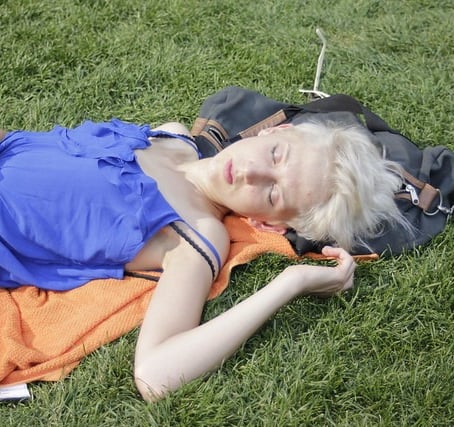

SLEEPYHEAD DAY
Unikeonpäivä (Sleepyhead Day) is a fun and traditional juhlapäivä (celebration day) in Finland, observed on 27. heinäkuuta (July 27th). The day has its origins in medieval Europe but has become a uniquely Finnish tradition, especially in Naantali, where it is celebrated in a grand way. According to the tradition, the unisin perheenjäsen (sleepiest family member) is woken up by being thrown into a vesistö (body of water), such as a lake or the sea. This playful custom symbolizes the importance of reippaus (briskness) and waking up early to be productive. In Naantali, a selected vuoden unikeko (Sleepyhead of the Year) is publicly tossed into the sea from the town’s vierasvenesatama (guest harbor), an event that draws many katsojat (spectators). The day is also associated with uskomukset (beliefs) that the person who sleeps too long on Unikeonpäivä will remain lazy for the rest of the year. Many Finns celebrate the occasion with aamiaisjuhlat (breakfast parties) and by gently waking up family members in humorous ways. While the tradition is lighthearted, it reflects the Finnish appreciation for ahkeruus (diligence) and starting the day with hyvä energia (good energy).
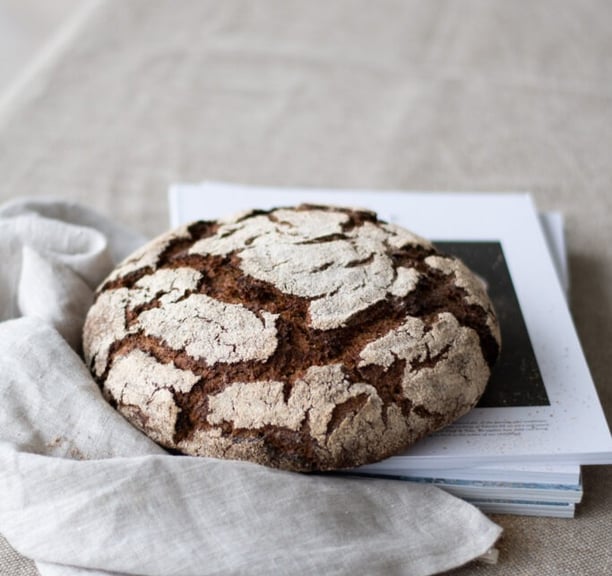

RYE BREAD
Ruisleipä (rye bread) is one of the most iconic foods in suomalainen ruokakulttuuri (Finnish food culture), known for its strong flavor, dense texture, and long shelf life. Made primarily from ruisjauho (rye flour), it has been a staple in Finnish households for centuries. Traditional hapanjuurileipä (sourdough bread) is fermented using a natural juuri (starter), giving it a slightly tangy taste and making it easier to digest. There are several varieties of ruisleipä, including reikäleipä (hole bread), which was traditionally hung on poles to dry, and limppu (rye loaf), a softer, slightly sweeter version. Many Finns consider ruisleipä an essential part of daily meals, often topped with voi (butter), juusto (cheese), or kylmäsavuporo (cold-smoked reindeer meat). Interestingly, in the past, young reindeer herders in Lapland had to prove their skills before receiving their porokortti (reindeer driver’s license), and one of the challenges was to survive on ruisleipä and other simple foods during long journeys. Due to its nutritional benefits, including high kuitupitoisuus (fiber content), ruisleipä is considered a healthy choice. Whether eaten fresh or dried into näkkileipä (crispbread), ruisleipä remains an essential part of Finnish culinary heritage.
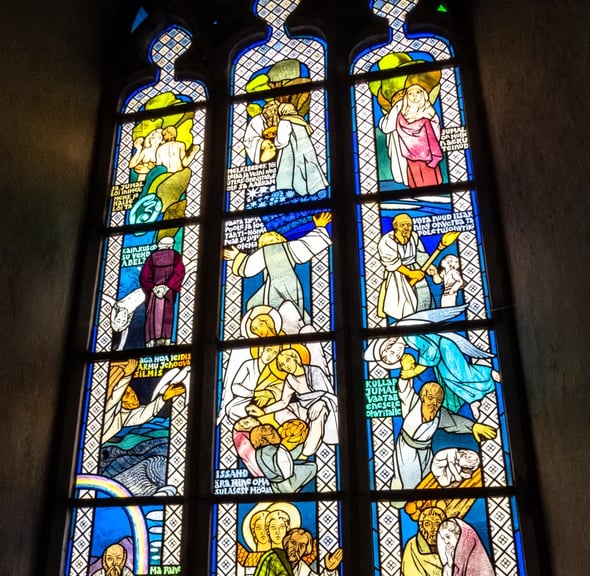

EXPAND YOUR KNOWLEDGE
If you are interested in learning more about Finnish culture and history as well as the language, we recommend that you download our complete Finnish language course!
You will not only receive all the contents available on our website in convenient pdf or epub formats but also additional contents, including bonus vocabulary, more grammar structures and exclusive cultural insights with additional Finnish vocabulary that you won't in any other textbook.
The additional articles include specific words or expressions related to the culture of the Finnish people. Not only will you be able to speak the Finnish language with confidence but you will amaze your listeners thanks to your knowledge of their country and history.


